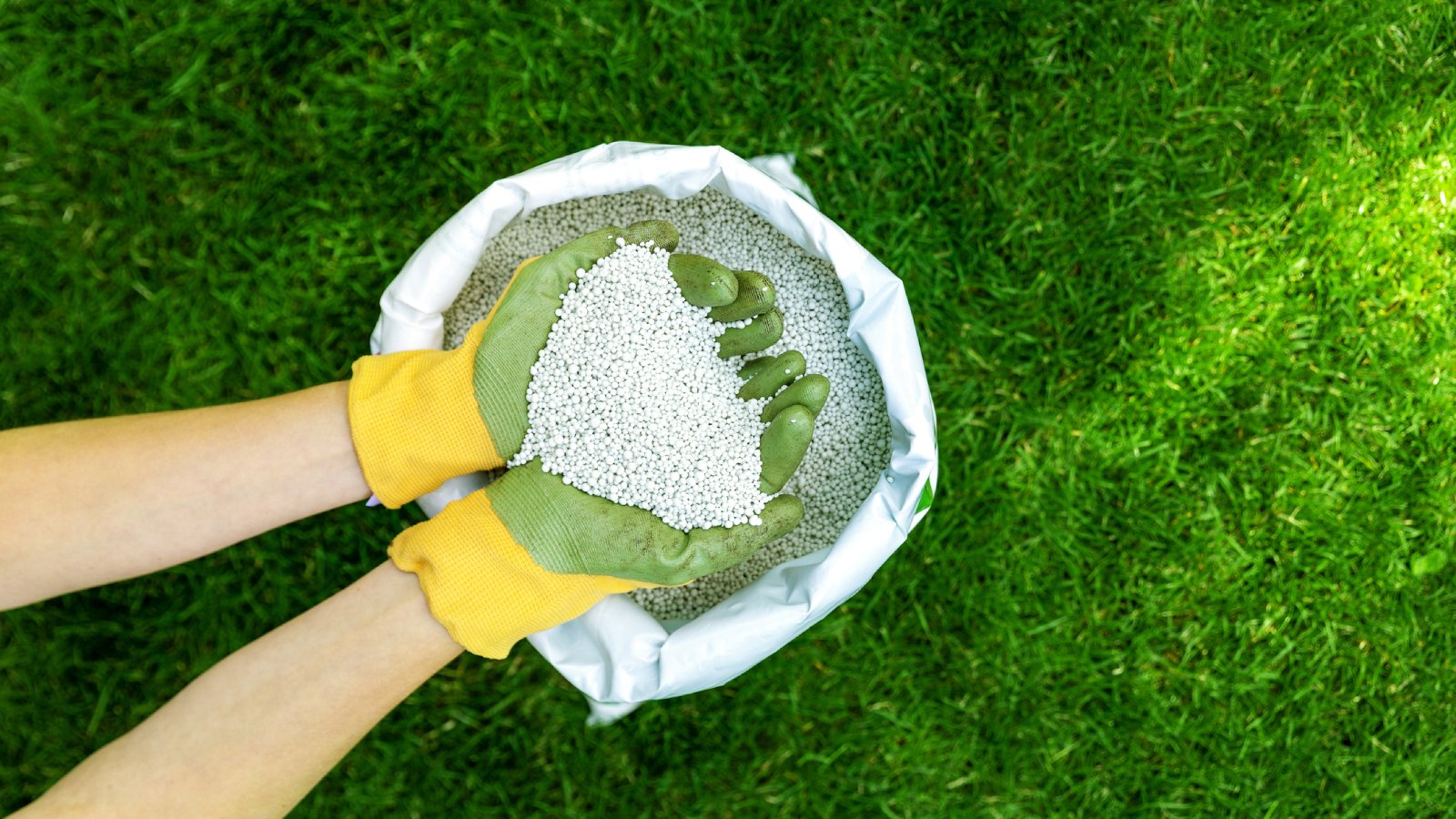Fertilizing In Hot Weather Can Actually Harm Plants
Fertilizing your plants in hot weather might seem like a good idea, but it can actually cause more harm than good. Learn how to keep your garden thriving without the risk of fertilizer burn or nutrient overload.

Liz Baessler

When summer’s heat is in full swing, you may be asking yourself, “Is it okay to fertilize plants in hot weather?” The answer is generally no. If a lawn, ornamental plants, or fruits and vegetables are drought and/or heat stressed, summer fertilizing can do more harm than good.
Why Fertilizing in Summer Heat Is a Bad Idea
When the temperature soars, your plants may suddenly lose their comfort zone. That’s when heat stress is likely to develop in the form of wilted, curled, or burnt leaves. You might think a little fertilizer would perk them up, but overfertilization results in excess salts near the roots of the plants, which can damage them, restricting the flow of water upwards. Salt also can affect plant tissues, causing dieback or brown edges on leaves.
Symptoms of Overfertilization
- Wilting and slow growth in broadleaf plants
- Brown needle tips throughout a conifer
- Brown or whitish crust at the top of the soil or sides of a container plant. Try flushing the container with lots of water to rinse out the salts.
- Brown or dead patches of grass in lawns where the spreader over-compensated
You can recognize when your plants are being overfertilized by the consistent pattern of damage in the plant, whereas disease or insect damage is irregular.
Heat can take its toll on vegetables too. It can cause premature blossom drop, particularly in cucumbers, melons, tomatoes, peppers, squash, and beans. Cool season vegetables, such as broccoli, will bolt when it turns hot. Cool season annuals, such as pansies, usually don’t survive when the temperature soars. Some perennials, like bleeding heart, protect themselves by going dormant when summer arrives.
If the lawn goes dormant due to heat and drought, you certainly don’t want to fertilize. If you fertilized in spring, you may not need to fertilize again till fall. Mid to late summer are typically too hot to fertilize the lawn.
Applying fertilizer in summer is best done with a light hand or when the plant shows signs of low fertility such as paler colors than usual. Then make sure you water the plants before applying fertilizer, and again afterward. If using granular fertilizer, it shouldn’t touch the leaves. NEVER apply fertilizer if the plant is heat or drought stressed.
How to Protect Your Plants
Mulching is one of the best things you can do for your ornamentals and edibles during the summer. It can stabilize the soil temperature, retain moisture, and natural mulches will decompose and enrich the soil.
Sign up for the Gardening Know How newsletter today and receive a free copy of our e-book "How to Grow Delicious Tomatoes".
If the heat is taking a toll on your plants, you can erect a shade cloth to provide some afternoon shade if none is available. Row covers will help screen vegetables.
Water your plants in early morning or early evening to get the most moisture to the roots and less water lost to evaporation. A soaker hose or drip irrigation works best. Avoid overhead irrigation if possible and try not to wet the leaves, which can lead to fungal diseases.

After graduating from Oklahoma State University with a degree in English, Susan pursued a career in communications. In addition, she wrote garden articles for magazines and authored a newspaper gardening column for many years. She contributed South-Central regional gardening columns for four years to Lowes.com. While living in Oklahoma, she served as a master gardener for 17 years.
- Liz BaesslerSenior Editor
